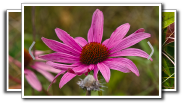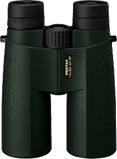Longhorn bees
(Melissodes spp.)
Overview • Description • Distribution • Taxonomy
_02s.jpg)
Overview
Melissodes is a genus of late-season longhorn bees. It occurs throughout the the western hemisphere, from northern Canada to Argentina. There are at least 140 species worldwide, 97 species in North America north of Mexico, and at least 15 species in Minnesota.
Melissodes are found mostly in late summer and fall, when the majority of their host plants are in bloom. A few are generalist feeders but most are specialist feeders, feeding on the pollen of plants in a single genus or family of plants. Most feed exclusively on plants in the aster (Asteraceae) family. Most of these will feed on any plant in the aster family. A few specialize in plants in a single genus.
Melissodes bees usually nest alone in the ground in sand or sandy loam soil. Adults are active during the day. Females spend the night in their nest. Males often congregate on groups of 10 to 20 at the end of the day. They grasp a plant with their mandibles and hang, unmoving, until morning. They are easy to photograph in the late afternoon..
Description
Melissodes are hairy, moderately large bees, as large to one-and-a-half times larger than a western honey bee.
The body is robust and nearly all black. The thorax and abdomen are densely covered with relatively long and more or less erect hairs. On the male there is a pair of robust spines at the base of the seventh abdominal segment.
The plate on the face (clypeus) is not lobed, and each lateral margin touches the adjacent compound eye. The clypeus is black on females, yellow or partly yellow on males. Males have very long antennae, much longer than females. On both sexes, the first antennal segment beyond the scape and pedicel (first flagellomere) is much shorter than the second.
There are three submarginal cells on the forewing. The second cell is usually shorter than first cell and is always shorter than the third cell. The third cell is much longer than wide.
Distribution |
||
|
Sources Biodiversity occurrence data published by: Minnesota Biodiversity Atlas (accessed through the Minnesota Biodiversity Atlas Portal, bellatlas.umn.edu, 10/22/2025). |
|
| 10/22/2025 | ||
Taxonomy
Order
Hymenoptera (Ants, Bees, Wasps, and Sawflies)
Suborder
Apocrita (Narrow-waisted Wasps, Ants, and Bees)
Infraorder
Aculeata (Ants, Bees, and Stinging Wasps)
Superfamily
Apoidea (Bees and Apoid Wasps)
Epifamily
Family
Apidae (honey bees, bumble bees, and allies)
Subfamily
Apinae (honey, bumble, longhorn, orchid, and digger bees)
Tribe
Eucerini (longhorn bees)
Subordinate Taxa
Subgenus Apomelissodes ![]()
Subgenus Callimelissodes ![]()
Subgenus Ecplectica
Subgenus Melissodes ![]()
![]()
Synonyms
Common Names
This genus has no common name. The common name of the tribe Eucerini is longhorn bees, and it is applied here for convenience.
Glossary
Clypeus
On insects, a hardened plate on the face above the upper lip (labrum).
Flagellomere
A segment of the whip-like third section of an insect antenna (flagellum).
Visitor Photos
Share your photo of this insect.
This button not working for you?
Simply email us at info@MinnesotaSeasons.com.
Attach one or more photos and, if you like, a caption.
Alfredo Colon |
||
_01s.jpg) |
_02s.jpg) |
|
_04s.jpg) |
_05s.jpg) |
|
_03s.jpg) |
||
Found this guy sleeping early in the morning. |
||
MinnesotaSeasons.com Photos
|

Slideshows

Visitor Videos
Share your video of this insect.
This button not working for you?
Simply email us at info@MinnesotaSeasons.com.
Attach a video, a YouTube link, or a cloud storage link.
Other Videos
Melissodes visits Helianthus in Ohio, USA July 20, 2016
Robert Klips
Melissodes longhorn bee
Oregon Bee
longhorn bee (Apidae: Melissodes) on Blossom
Carl Barrentine

Visitor Sightings
Report a sighting of this insect.
This button not working for you?
Simply email us at info@MinnesotaSeasons.com.
Be sure to include a location.
MinnesotaSeasons.com Sightings


_04t.jpg)
_02t.jpg)
_03t.jpg)